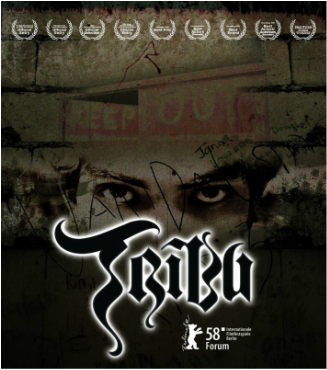 Tribue shows the cycle of urban poverty and violence. Tribue shows the cycle of urban poverty and violence.
Tags: children/youth, class, crime/law/deviance, inequality, rural/urban, violence, gangs, philippines, poverty, subtitles/CC, 61+ mins
Year: 2007 Length: 1:33:29 Access: YouTube Summary: This independent film, shot in the ghetto district of Tondo (Manila, Philippines), is "an ultra-realist depiction of youth corrupted by violence, death and decay, told documentary-style." The plot follows ten year-old Ebet as he witnesses the activities of rival street gangs, and is ultimately a story about the cycle of urban poverty. In the film, "the dangerous unlit streets and labyrinthine alleyways in the ghetto district of Tondo ... becomes a claustrrophobic backdrop to a random killing that triggers a wild and bloody gang war. Ebet, a 10 year old boy, encounters the members of Tondo’s gangsta tribes – juvenile thugs and petty criminals whose pastime of sex and drugs are veiled under their eloquent freestyle hip-hop rap – as each gang participates in a long, bloody and vicious cycle of revenge and reprisal, gangsta style. After a brutal midnight initiation ritual, young gang members discover the lifeless body of a young man on the street, knife still stuck in its back. Ebet watches as the police round up the gang, and charged for the murderous riots that erupt every night in the ghetto. The next day, members of the bereaved gang to whom the victim was a member of, discuss to find out which tribe perpetrated the crime. A vendetta is silently plotted, new alliances formed, to flush out the real murderers ... Hailed as a gritty portrayal of Manila’s notoriously violent streets of Tondo, Jim Libiran’s Tribu is Realist Cinema with a social project. To act as main actors, the filmmaker employed real-life gang members from rival clans, triggering a wave of unification and peace in a large part of Tondo's ghettos." Submitted By: Jim Libiran
3 Comments
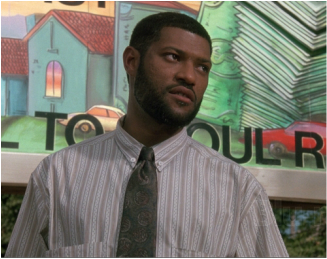 Laurence Fishburne explains gentrification in Boyz N the Hood. Laurence Fishburne explains gentrification in Boyz N the Hood. Tags: capitalism, class, community, inequality, race/ethnicity, rural/urban, gentrification, housing, neighborhood succession, racism, 00 to 05 mins Year: 1991 Length: 4:18 Access: YouTube Summary: Gentrification radically transformed my neighborhood. Growing up in and around east Austin, I have experienced first-hand the changes that can occur within an area over a mere decade. As a child, I visited family members throughout east Austin. All of us are Latino, and everybody not only knew everyone else, but also where they lived. Now as the city rapidly grows, many in my family are being forced by rising property taxes to sell their homes. These homes are primarily being bought up by young, affluent, white real-estate developers, who are scrapping such dwellings and doing complete renovations in order to attract young, affluent, white occupants. This scene from the film Boyz N the Hood (1991) can be used to teach students about gentrification: "the process of renewal and rebuilding accompanying the influx of middle-class or affluent people into deteriorating areas that often displaces poorer residents." In this clip, Furious Styles (Laurence Fishburne) takes his son, Trey, and a friend to a nearby neighborhood where a billboard has just been put up offering to buy-up homes. Furious explains the specifics of how the property values in a neighborhood are brought down, while the land is bought out and sold for big profit. He also notes that this could be prevented if residents maintained solidarity by retaining black ownership. Placing gentrification into a larger historical context, this clip from the Broadway play Clybourne Park features a mix of humorous scenes that collectively illustrate salient attitudes and behaviors accompanying neighborhood succession over time: residential areas that were once white and middle-class in composition transformed through white flight into those with predominately black working-class and poor populations, and then ultimately with gentrification, back into white upscale neighborhoods. See also this recent piece featuring Spike Lee, arguing that gentrification reveals government racism in the provision of far better public facilities and services to an area once it is gentrified. (Note: A version of this post originally appeared on SoUnequal.) Submitted By: Rene Gonzalez 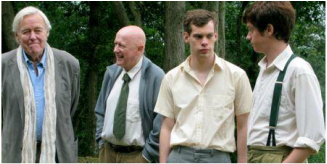 This short film examines the changing lives of gay men in rural UK. This short film examines the changing lives of gay men in rural UK. Tags: aging/life course, emotion/desire, lgbtq, prejudice/discrimination, rural/urban, sex/sexuality, adolescence, gay, performative social science, uk, 21 to 60 mins Year: 2012 Length: 30:00 Access: Vimeo Summary: Rufus Stone is a short film about "love, sexual awakening, and treachery." According to Director Josh Appignanesi, "the story dramatizes the old and continued prejudices of village life from three main perspectives. Chiefly it is the story of Rufus, an ‘out’ older gay man who was exiled from the village as a youth and reluctantly returns from London to sell his dead parents’ cottage, where he is forced to confront the faces of his estranged past. Of these, Abigail is the tattle-tale who ‘outed’ Rufus 50 years ago when he spurned her interest. She has become a lonely deluded lush. Flip, the boy Rufus adored, has also stayed in the village: a life wasted in celibacy (occasionally interrupted by anonymous sexual encounters) and denial (who is) looking after his elderly mother. But Rufus too isn’t whole, saddled with an inability to return or forgive." The film is based on three years of a Research Council UK funded study of the lives of older lesbians and gay men in south west England and Wales, a part of the national New Dynamics of Ageing Programme of research. The project was led by Kip Jones, who also wrote the story and acted as Executive Producer for the film. Winner of two awards, the film has gone on to be screened at film festivals, other universities in the UK, USA and Canada and by organizations such as Alzheimer’s Society UK, LGBT groups, and health, social and aging support networks. Screenings of the film would be appropriate for a wide variety of audiences, including in undergraduate and graduate teaching, community groups, and LGBT and aging support organisations. Viewers can access more information about the project and film at the Rufus Stone Blog. Submitted By: Kip Jones 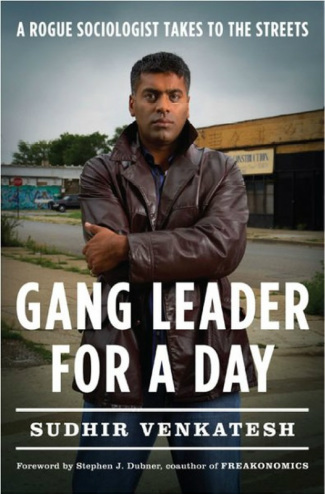 Sudhir Venkatesh's ethnography examines a Chicago gang. Sudhir Venkatesh's ethnography examines a Chicago gang. Tags: crime/law/deviance, methodology/statistics, organizations/occupations/work, prejudice/discrimination, rural/urban, ethnography, poverty, qualitative methodology, 00 to 05 mins Year: 2008 Length: 4:10 Access: YouTube Summary: In Sudhir Venkatesh's book, Gang Leader for a Day, he's billed as a "rogue sociologist," but the truth is his ethnographic method of research is anything but rogue. Sociologists have been conducting ethnographies for quite some time, as this method has long been recognized to have several distinct advantages over other research methods. In this video, which is based on the book, Venkatesh explains that he started the research by tracking down a number of gang members in a poor community and asking them questions about their everyday lives. At first, the gang believed he was a member of a rival Mexican street gang, and held him hostage for a day, before finally letting him go and ultimately agreeing to let him tag along as they went about their daily lives. The clip is useful as a rather vivid explanation of an ethnographic research design. In addition to touching on many of the distinct characteristics of ethnographic work, the clip can serve as a launching pad for discussing many of the method’s strengths. For instance, working in this tradition, Venkatesh was able to build trust with gang members, allowing him to work out a number of the details of gang life that likely would not have been disclosed in a survey or interview. Unlike other research designs, by spending a long period of time in the community the gang controlled, Venkatesh was able to bear witness and analyze emergent, often unanticipated phenomena. Similarly, the ethnographic method allowed Venkatesh to acquire more of a processual understanding of the interactions between the gang and community, and in many ways, exploded the myth that the gang’s interactions with the community were strictly coercive. As Venkatesh recounts, the gang often gave people small gifts of cash to help people get by and ultimately win their favor. As for weaknesses, while it is tempting to conclude from the video that ethnography is an inherently dangerous method, there are no protocols forcing ethnographers to choose dangerous research sites or put themselves in harm's way. Instead, the findings from ethnographies tend to be limited to the local group or population being studied. In other words, the findings often lack generalizability. Note that this is the second video on The Sociological Cinema featuring the ethnographic field work of Sudhir Venkatesh. Submitted By: Lester Andrist 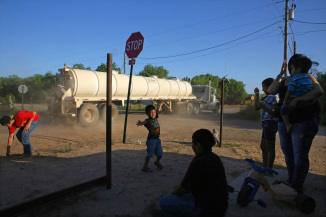 An oil truck rolls through a nearby poverty-stricken neighborhood. An oil truck rolls through a nearby poverty-stricken neighborhood. Tags: economic sociology, inequality, rural/urban, oil boom, rural poverty, 00 to 05 mins Year: 2014 Length: 5:30 Access: YouTube Summary: While generating windfall fortunes for a few, economic booms typically create a host of dysfunctional consequences for many others. This is certainly the case for those living in southern Texas towns that sit atop the Eagle Ford shale field, which produces $15 million of oil per day. This New York Times video documents the efforts of one resident, a former ranch hand now roughneck, to supplement family groceries by hunting feral hogs in the brush country. The associated Times article addresses the especially adverse economic effects of the boom for the many poor living the region, while also producing in general, uncontrolled population growth, an upsurge in traffic fatalities, and rampant environmental degradation, among other problems. Together, the video and article show the extreme hardship that exists alongside the vast economic wealth. They paint a grim picture of rural poverty where basic infrastructure (e.g. police, local government, potable water, sewers) is missing and which help to reproduce generations of poverty. Additional analysis can be found in a recent series of articles appearing in The Texas Monthly about Eagle Ford, including this extensive piece by Brian Mealer on boom-related social issues. (Note this is a modified version of Michael's blog post at So Unequal. Photo from Nicole Bengiveno/NYT.) Submitted By: Michael V. Miller 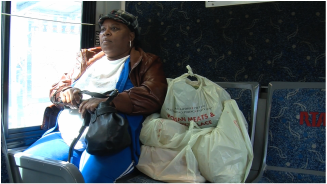 Willa Sparks rides the bus home from a grocery store across town. Willa Sparks rides the bus home from a grocery store across town. Tags: class, food/agriculture, health/medicine, inequality, race/ethnicity, rural/urban, food desert, food justice, poverty, racism, 11 to 20 mins Year: 2010 Length: 13:58 Access: Vimeo Summary: Poor diets are a result of the structural inequalities that limit access to healthy food, not individual behaviors. Hungry for Health: A Journey through Cleveland’s Food Desert documents a day in the life of Willa Sparks, a woman living without ready access to fresh and affordable food. Instead, she must rely on corner stores, fast food restaurants, and gas stations selling processed and frozen foods. By most accounts, Sparks is a statistic. She lives in an economically deprived and segregated urban area. She is also single and raising a child. However, Sparks is not portrayed as a victim in Hungry For Health. Members of minority groups, including women, are more likely to be in poverty and living in food deserts; thus, they are more likely to suffer from poor health. While residential environments do shape racial health disparities, the film focuses on Sparks’ efforts to combat social inequalities. Denied the fresh vegetables and fruits needed to maintain a healthy diet, Sparks suffers a heart attack and is diagnosed with diabetes. The doctor warns her to change her eating habits or die young. Sparks rises to the challenge learning the nutritional knowledge she lacked and overcoming the first hurdle to accessing fresh foods for her family. Proximity, income, and mobility also influence her accessibility to a healthy diet. Sparks doesn’t own a car and can’t afford a taxi, so she must rely on public transportation to go to the market. At the store, she carefully selects her groceries, spending wisely and shying away from cheaper junk food. Her tight budget forces her to consider her bus pass as part of her daily expenditures. Because she’ll spend time outside waiting for buses and walking to destinations, she must always be prepared for inclement weather. There’s no direct route to the store, so Sparks spends the good part of the day traveling to purchase food before returning home to start preparing it. The process is slowed by her health and poor mobility. She walks with a cane and carries home as many grocery bags as she can lift. Viewers gain both a deeper understanding of food deserts and a new reverence for the people living in them. For more information about the film, please contact the filmmaker at [email protected]. Submitted By: Mary Barr, PhD 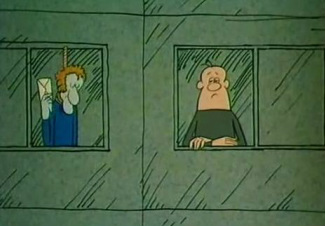 Gustav experiences modern life as an iron cage. Tags: rural/urban, theory, weber, gesellschaft, iron cage, rationalization, 00 to 05 mins Year: 1965 Length: 4:51 Access: YouTube Summary: This short cartoon comes from Hungarian animation. There are no words, but it skillfully and humorously illustrates the rationality and iron cage of modern life. It follows the main character, Gustav, from the end of his work day as a drone through his evening as he slowly descends into isolated madness. From a Weberian perspective, we might view the organization of modern urban life, with its highly efficient bureaucracies, traffic systems, and living spaces as overly rationalized spaces of social life. People are driven not by traditions, values, or emotions but rather by calculated efficiencies, and experience life in isolation from other humans. These systems of efficiency, calculation, and control constitute Weber's notion of an iron cage. It also works as an example of gesellschaft, where individuals act in their own interest (in contrast to gemeinschaft, where individual action is shaped via community norms and interaction). Ultimately, this existence drives Gustav to (unsuccessfully) attempt suicide and then to try to escape the monotony through alcohol and sleeping in the street, only to find he cannot escape the iron cage. Viewers can be encouraged to identify the elements of daily life that reflect the rationalization, iron cage, and gesellschaft. Submitted By: Sydney Hart 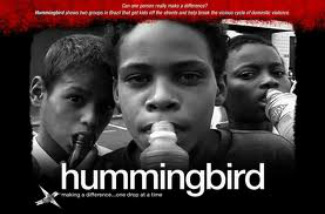 Hummingbird chronicles an effort to help street kids in Brazil. Tags: children/youth, emotion/desire, inequality, rural/urban, social mvmts/social change/resistance, violence, domestic abuse, homelessness, human rights, pedagogy of affection, poverty, sex trafficking, street children, subtitles/CC, 21 to 60 mins Year: 2007 Length: 47:33 Access: www.hummingbirdmovie.com Summary: Often, after learning about the numerous social problems plaguing our society, students ask: "But what can we do?" and sometimes they express a sense of hopeless by suggesting that "things will never change." Hummingbird, an award-winning documentary film, was in some ways created in this same spirit of curiosity about the possibility of change amidst seemingly insurmountable social problems. Filmmaker Holly Mosher explains at the outset of the film why she visited the Brazilian city of Recife: "I visited because I wanted to see if it was really possible for kids who have lived all their lives amongst violence and misery to become part of a society that has always rejected them." The film chronicles the story of how two nonprofits in Brazil use the pedagogy of affection to help street kids and women break the vicious cycle of domestic violence. The pedagogy of affection is a method of social change whereby people help people, steeped in the belief that affection, touch, and caring are essential to holistic health and personhood. Viewers are encouraged to consider the various ways social change is effected and represented in the film, and specifically the role of grassroots organizations and communities that embrace hope and "an indefatigable spirit in the face of threats, financial difficulties, and a culture seemingly unable or unwilling to reform itself." At the 44:19 minute mark, Cecy Prestrello, co-founder of the non-profit Coletivo Mulher Vida (Women’s Life Collective), recounts the following story: "There was a fire in the forest. And all the animals were running around, crazed. Then a hummingbird began to pick up water in its beak and put it on the fire. And the lion stopped and watched. He said 'Are you crazy hummingbird? You have to protect yourself, like all the others. What are you doing?' The hummingbird replied 'I am doing my part…and what about you? What are you doing?'" Prestrello's perspective on social change would pair well with Allan G. Johnson's piece, "What Can We Do? Becoming Part of the Solution." Submitted By: Holly Mosher  The US has the world's highest incarceration rate. The US has the world's highest incarceration rate. Tags: crime/law/deviance, race/ethnicity, rural/urban, drug war, incarceration, poverty, prisons, school-to-prison pipeline, the wire, 21 to 60 mins Year: 2012 Length: 24:11 Access: Al Jazeera Summary: This short news documentary examines the relationships between race, poverty, incarceration, crime, and the war on drugs. It focuses on Baltimore, and its very high crime rates, showing how poor residents get attracted to crime and the drug business as a means of economic survival. With the war on drugs and its harsh prison sentences, many poor people are getting put behind bars. But despite harsh prison sentences and incarceration, these individuals continue to be drawn into selling drugs. Ed Burns, one of the writers behind The Wire, says "I don't know how much progress is being made because we're not dealing with the root causes." For example, jobs have been leaving Baltimore (and other US cities) since the late 1960s as a result of suburbanization and deindustrialization. Donnie Andrews (the real-life inspiration for Omar, a popular character from The Wire) notes that when people come out of prison, they are not able to find affordable housing, jobs, or health care, so people are likely to end up back in crime to survive. But rather than addressing the causes, since Nixon started the war on drugs in the early 1970s, our means of addressing the problem is through punishment and incarceration. This has caused an explosion in the US prison population, and the US now incarcerates more people than any other country in the world. This issue of drugs and incarceration also has a significant racial dimension. Despite the fact that black people are only slightly more likely to be involved in drugs than white people, they are seven times more likely to be incarcerated for drugs. The narrator notes that "if current incarceration rates remain unchanged, 1 in 3 black men can expect to go to prison in their lifetime." In the video, Ed Burns adds that it is not really a war on drugs, but a war on black people (which has also now spread to a war on poor whites) that was started to take away energy from the Civil Rights movement. Viewers may be encouraged to reflect on what is the objective in the war on drugs? To what degree is it successful? What kind of policies would help rehabilitate perpetrators and help them to avoid returning to prison? For a shorter 2008 news clip (6:40) that more narrowly focuses on drug use in Baltimore, see here. Submitted By: Paul Dean 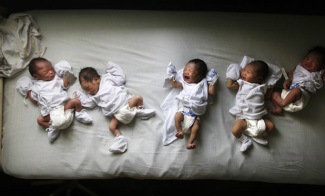 Scene from LA Times video, "The Challenge Ahead" Scene from LA Times video, "The Challenge Ahead"
Tags: abortion/reproduction, consumption/consumerism, demography/population, environment, food/agriculture, globalization, inequality, rural/urban, 06 to 10 mins
Year: 2012 Length: 5:12 Access: Los Angeles Times Summary: This short video, "The Challenge Ahead: Rising Numbers, Shrinking Resources," accompanies a five-part series from the Los Angeles Times and highlights the causes and consequences of the global population explosion. Demographers anticipate continued population growth driven by the reality that there are now 3 billion people on the planet under the age of 25, and about 1.2 billion of them are adolescents who are entering their reproductive years. Projections suggest that by 2050 there will be well over 9 billion people on the earth, and the video highlights many of the resource demands of this many people. For instance, Jonathon Foley of the Institute on the Environment asks, "how are we going to feed 9 billion people without trashing the planet?" and Joel E. Cohen notes that humans are currently consuming resources on planet earth as if the earth were about 50% more productive. The connection between consumption (and production) and population is also explored in Foley's 2011 Ted Talk, where he reports that the total area humans are currently using for agriculture is about the size of South America (16 million square kilometers), while the total area used as pasture and range land is about the size of Africa (30 million square kilometers). Humans are also currently using about 50% of Earth's fresh water, and of this share, about 70% is used for agriculture. But after connecting population growth to agricultural demands, it is only a short distance to discussions exploring the connections between population and environmental degradation, or even climate change. After all, as Foley also points out in his Ted Talk, agricultural activity is by far the largest contributor of greenhouse gases. Thus "The Challenge Ahead" is an excellent teaser for any introduction to the field of demography, and it can be used to spur discussion about the importance of the field for tackling some of the most formidable challenges of the twenty-first century. Note that The Sociological Cinema has previously recommended clips that explore problems associated with population (here, here, and here). Submitted By: Lester Andrist |
Tags
All
.
Got any videos?
Are you finding useful videos for your classes? Do you have good videos you use in your own classes? Please consider submitting your videos here and helping us build our database!
|
 RSS Feed
RSS Feed
